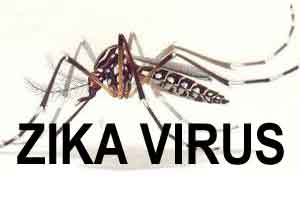- Home
- Editorial
- News
- Practice Guidelines
- Anesthesiology Guidelines
- Cancer Guidelines
- Cardiac Sciences Guidelines
- Critical Care Guidelines
- Dentistry Guidelines
- Dermatology Guidelines
- Diabetes and Endo Guidelines
- Diagnostics Guidelines
- ENT Guidelines
- Featured Practice Guidelines
- Gastroenterology Guidelines
- Geriatrics Guidelines
- Medicine Guidelines
- Nephrology Guidelines
- Neurosciences Guidelines
- Obs and Gynae Guidelines
- Ophthalmology Guidelines
- Orthopaedics Guidelines
- Paediatrics Guidelines
- Psychiatry Guidelines
- Pulmonology Guidelines
- Radiology Guidelines
- Surgery Guidelines
- Urology Guidelines
RNA Viruses can enter our Genes and activate disease processes : AIIMS Scientists

In a breakthrough study published in “Frontiers in Microbiology-Virology”, Dr. Muneeb Faiq and his associates from All India Institute of Medical Sciences and National Brain Research Institute, India have shown how positive-stranded RNA viruses enter our genomes and stay there in a quiescent state or activate disease processes by taking Zika viruses as a model. They have propagated a new concept in the field of virology called “Genome Resurrection”. According to researchers their research has widespread implications not only limited to Zika virus and has imperative implications on many other diseases.
Dr. Muneeb Faiq, the lead investigator of the research said that one of the interesting points in their research is the indication of “Endogenous Retrovirus Resurrection Elements” in viral genomes which activate the silently archived gene elements in our genomes and employ them to integrate with the host genome. Another investigator Dr. Ashutosh Kumar said that, “This paper explains an important prerequisite step in the Zika virus mediated microcephaly. The first step in the mechanism we suggested for Zika virus-mediated microcephaly is the possibility of the integration of the positive strand RNA viral genome into the DNA of the host (cells of our body in this case). And our paper describes a definite possibility and mechanism of such integration.” Dr. Ashutosh further explicated that the basis of their present radical idea is the mechanism they proposed for how Zika virus causes developmental brain defects. In that theory, these scientists had proposed that Zika virus enters the host genome and interferes with the retinoic acid signaling in mechanism. It is important to point out that several other investigators have confirmed the veracity of their theory.
Dr. Pavan Kumar, a postdoctoral fellow and co-author of the research report said, “Our theory about the mechanism of Zika virus mediated brain defects is an important insight that will help in understanding the virulence and pathogenesis of Zika virus and its relation to brain embryopathy. However, there was one fundamental problem in our theory that it could not explain the possibility of the entry of Zika virus genome into the human genome. We have now described a novel mechanism which establishes a definite possibility of the integration of positive strand RNA viruses into the host genome”. This insight is a pioneering breakthrough and may lead to radical changes in fundamentals of modern virology and may pave way to important understandings of virus-based pathogenesis which will ultimately lead to better treatment and management of diseases like Brain embryopathy and AIDS.
Integration of positive strand RNA viruses is not considered a possibility because these viruses do not have integrase and reverse transcriptase which are indispensable elements that a virus needs to enter the host genome. Also, positive strand RNA viruses do not need to synthesize DNA to complete their life cycle neither do they have any reverse transcriptase to generate a complementary copy DNA. Since there seems to be no chance of DNA stage in their life cycle, it becomes easy to infer that a DNA stage does not exist and is not functionally important. Faiq group has suggested the presence of such a possibility despite the absence of the above mentioned essential elements. In order to give a scientific basis to this apparently radical proposition, they have provided a strong justification of a positive strand RNA viral genome (devoid of reverse transcriptase and integrase) integration into host genome and have also speculated a set of possible functions such an integration may serve the virus.
Vikas Pareek, co-author of the paper and a neuroscience researcher at the National Brain Research Center, Manesar, Haryana, said, “Our proposition is a pioneering idea of positive-strand viral genome integration into the human genome, and the integration being highly probable during neural tube development during embryogenesis when undifferentiated cells differentiate into neurons. The paper offers a scientific basis for the integration of Zika virus genome into the Human genome”. He also said that “The Retinoic Acid Rare Element (RARE) are present in both the Zika virus and the promoters of Retinoic acid-dependent genes. The work is important in the sense that recurrence of Viral diseases and other ambiguous questions can be targeted using this approach in future.”
Source:
Etiologically Elusive Disorders Research Network, New Delhi
Journal Citation and More Information:
Faiq MA, Kumar A, Himanshu N. Singh HN, Pareek V, Kumar P. Possibility of the Integration of Positive Strand RNA Virus Genome into the Host Genome: A Revisit to the Existing Paradigm (Commentary: A Possible Mechanism of Zika Virus Associated Microcephaly: Imperative Role of Retinoic Acid Response Element (RARE) Consensus Sequence Repeats in the Viral Genome). Front. Microbiol. | doi: 10.3389/fmicb.2018.00190

Disclaimer: This site is primarily intended for healthcare professionals. Any content/information on this website does not replace the advice of medical and/or health professionals and should not be construed as medical/diagnostic advice/endorsement or prescription. Use of this site is subject to our terms of use, privacy policy, advertisement policy. © 2020 Minerva Medical Treatment Pvt Ltd